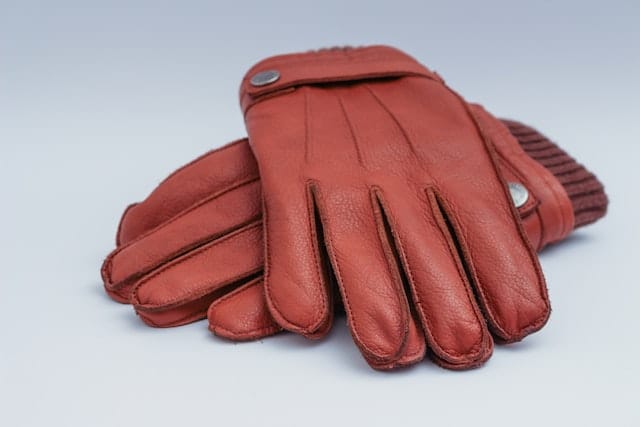Ever felt overwhelmed by the sheer variety of options in the leather industry, especially when it comes to synthetic leather?
It’s like being lost in a maze of choices, with questions swirling around quality, production methods, and sustainability.
Fear not! Our definitive guide is here to be your compass in this bewildering landscape.
We’re lifting the veil on synthetic leather, giving you the lowdown on how it’s made, where it’s used, and its impact on the planet.
Armed with this knowledge, you’ll stride through the leather market with confidence and clarity.
What is Synthetic Leather?
Synthetic leather, also known as faux leather or vegan leather, is a man-made material designed to mimic the look and feel of real leather.
It is typically composed of plastic-based materials such as polyurethane (PU) or polyvinyl chloride (PVC).
Synthetic leather offers a cruelty-free alternative to traditional leather products, but does have its own sustainability concerns.
Synthetic leather is a product of precise science and creative innovation. Originating in laboratories rather than pastures, its production process blends raw materials into a versatile alternative to genuine leather.


Synthetic Leather vs Real Leather
When it comes to choosing between synthetic and real leather, there are several factors to consider, but we always favor real leather for its unparalleled durability and timeless appeal.
Durability
Real leather stands out for its exceptional durability, often lasting for decades with proper care.
It develops a rich patina over time, enhancing its beauty and character.
In contrast, artificial leather may not withstand the test of time as well as real leather, showing signs of wear and tear more quickly.
Natural Beauty
Real leather boasts a natural beauty and texture that is difficult to replicate.
Each piece of genuine leather has unique characteristics, such as grain patterns and markings, adding to its allure.
Fake leather, while capable of mimicking the appearance of real leather, often lacks the depth and richness of its genuine counterpart.
Longevity
Thanks to its durability and timeless appeal, real leather products can become cherished heirlooms passed down through generations.
Synthetic leather, on the other hand, may not have the same longevity, requiring more frequent replacement due to wear and tear.
Environmental Impact
While real leather has traditionally been associated with environmental concerns, modern leather production methods have become more sustainable, utilizing by-products from the meat industry and minimizing waste.
In comparison, synthetic leather production still relies on petrochemicals and energy-intensive processes, contributing to pollution and greenhouse gas emissions.
Leather alternatives are often found in vegan leathers. Examples of these are cork leather and mushroom leather that are made from 100% sustainable items. Note that these items will be less durable.
Comfort and Breathability
Leather made from real animal skin offers superior comfort and breathability, conforming to the body over time and allowing air to circulate.
This makes it an ideal choice for items like shoes and upholstery.
Synthetic leather, while often more affordable, may lack the same level of comfort and breathability, leading to discomfort, especially in warm weather.
The Choice is Clear
While synthetic leather may offer affordability and versatility, it cannot match the durability, natural beauty, and longevity of real leather.
At The Real Leather Company, we believe in providing our customers with briefcases, messengers, duffles and wallets that stand the test of time, offering unparalleled quality and craftsmanship that can be enjoyed for years to come.
How is Synthetic Leather Made?
Synthetic leather is crafted using a blend of science and ingenuity.
Unlike genuine leather, it doesn’t come from animals but is created in laboratories. Here’s a peek into the fascinating process:
1. Mixing the Ingredients
To replicate the qualities of real leather, scientists combine various substances such as polymers, chemicals, and additives.
These are carefully mixed together until they form a consistent blend.
2. Forming the Base
Once the mixture is ready, it’s spread onto a backing material, forming a thin layer.
This layer serves as the foundation for the synthetic leather and provides the canvas for further processing.
3. Adding Texture and Finish
Next comes the creative part.
Different techniques like embossing and printing are used to give the synthetic leather its texture and pattern.
This step is crucial for mimicking the natural look of genuine leather.
4. Enhancing Durability
To ensure the synthetic leather can withstand wear and tear, protective coatings are applied.
These coatings not only provide durability but also add a glossy or matte finish, depending on the desired look.
5. Innovations for Sustainability
With the rising demand for eco-friendly products, researchers are constantly exploring new ways to make synthetic leather more sustainable.
This includes using recycled materials and developing manufacturing processes with minimal environmental impact.
